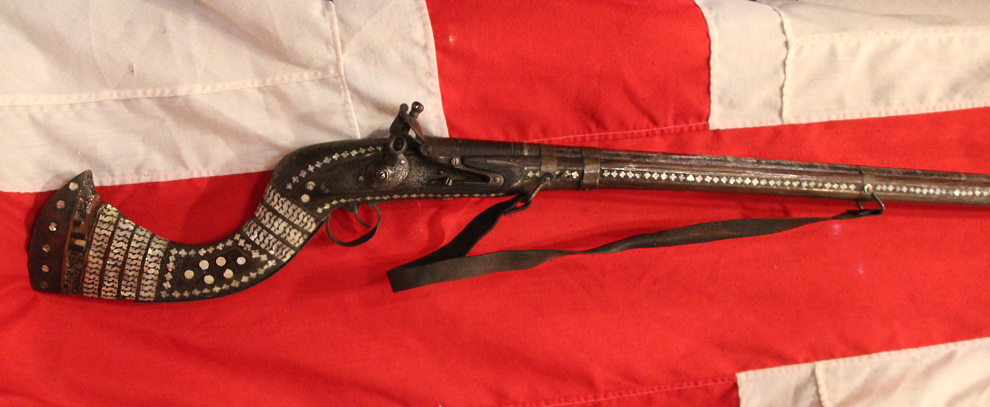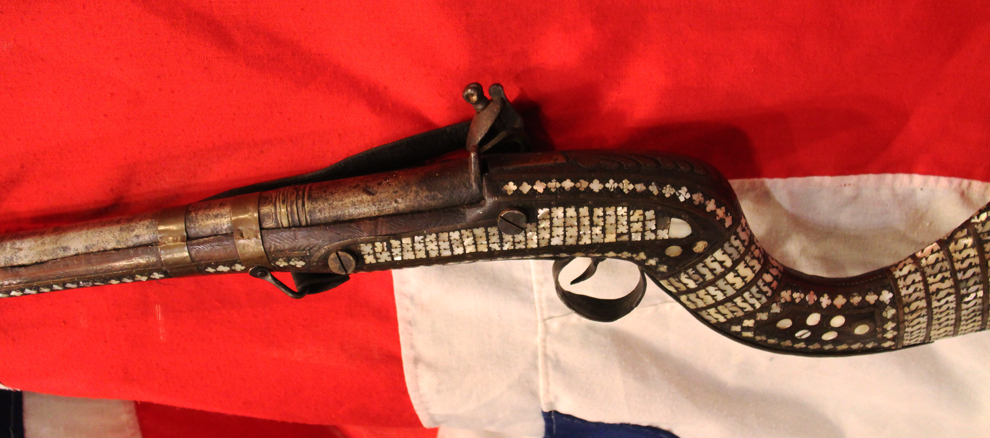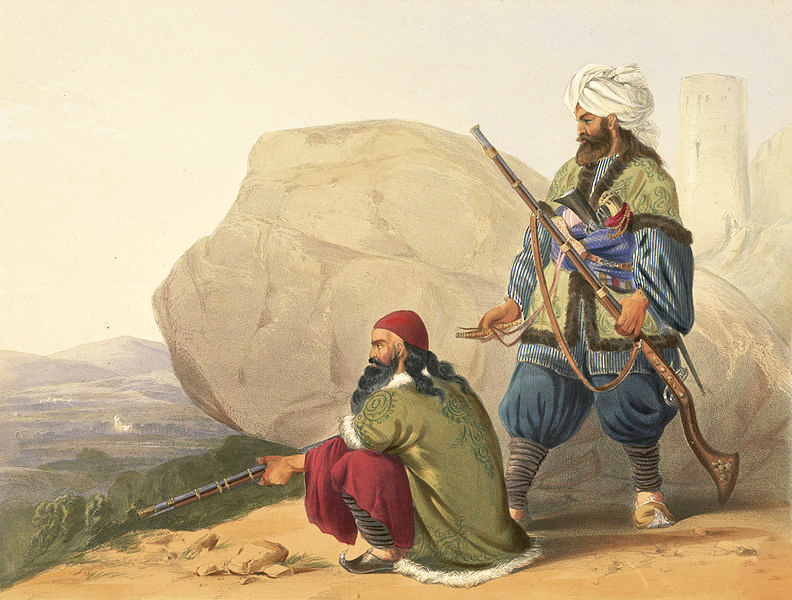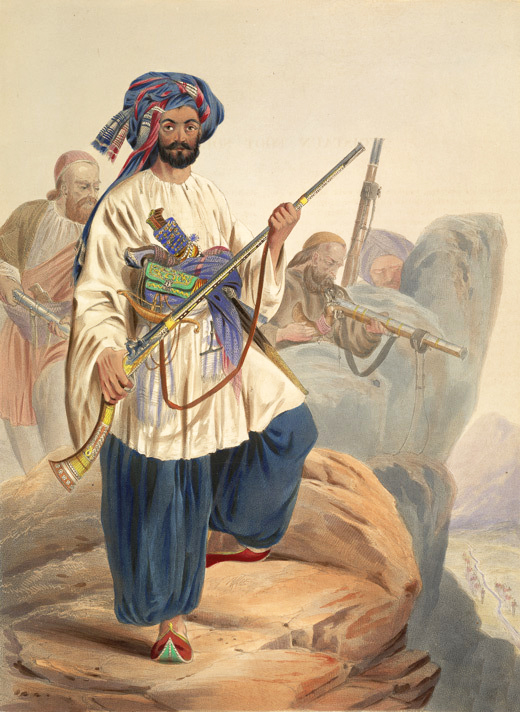An 18th Century Highly Decorated North West Frontier Jazail, With The Iconic Recurved Butt Stock & Elaborate Inlaid Decor
With a long Damascus twist barrel and a captured British EIC flintlock. Formerly this type of elaborately decorated long gun were the weapons of regional tribal warlords in the 18th and early 19th century.
A very fine, attractive and incredibly significant historical example of a North West Frontier Afghan War long gun known as a Jazail. With a highly distinctive recurved butt. Likely Damascus steel twist barrel. The ordnance inspected lock was captured from an East India Co. musket. It has the EIC mark of the lion, plus probably traces of an ordnance inspector stamp number. The gunlock and it's maker is a most interesting historical aspect of this intriguing gun, it appears by the remaining surface it may have been made by Hirst of London. Hirst had his business based in Little Tower Hill, London, and he was a contractor to the Ordnance and the East India Co. His specialism was rare breech loading rifles, with screw mounted breeches, and wall mounted pivot guns with large flintlock mechanisms, just as this one is.
Jazails very often had captured British made locks, as their domestically made locks were often very basic matchlock types. The Jazail was used by the notorious North West Frontier tribesmen, in the 18th century, during the era of what was called The Great Game. The period when the British control of India was expanding, yet under considerable and constant threat by Russia, and it's attempted conspiracies in order to influence discord among the Indian populace for their own advantages, ‘plus ca change, plus c'est la meme chose’ .
Rudyard Kipling's novel Kim was based around this very geo political situation, and a most informative, accurate, and yet ripping tale that it is too. It would have also been used in the Ist Afghan War in the 1830's, in many ways the first major conflict of what became known as " The Great Game". The reasons for the British invasion and occupation of Afghanistan in the late 1830s are many and varied. They mainly revolve around what one of the 'victims' of the event referred to as 'the Great Game'. This was the name given by Arthur Conolly to denote the shadow boxing between Russia and Britain for influence in Central Asia for much of the 19th Century. Relations between Russia and Britain were strained in the 1830s as the British feared the expansionist and strong armed tactics of Tsar Nicholas I who came to the throne in 1825. He sought a policy that expanded Russian influence southwards and eastwards. This was bringing Russian influence towards Britain's own 'Jewel in the Crown' India.
India was still ruled by the East India Company, although the British government had constrained much of the company's freedom to act by this time and was ultimately guiding its policy on the wider international scene. The British were particularly concerned at Russian influence in Persia. They had heard reports that the Russians were helping the Shah of Persia beseige Herat on the western side of Afghanistan. If successful in taking this city, Russian influence would advance along the route that they would take if they were to invade India at any point in the future. But British alarm bells really began to ring when a rumour circulated that a Russian had arrived at the court of Dost Mohammed in Kabul. If this was true, then it was believed that Russian influence might extend to the borders of India itself. Steeped in classical education, most British decision makers knew the invasion route of India taken by Alexander the Great and assumed that the Russians would soon have the capability to make a similar incursion. As with all our antique guns no license is required as they are all unrestricted antique collectables Rudyard Kipling's poem of the Afghan War refers to the feared deadly accuracy of the Jazail, and it goes;
"A scrimmage in a Border Station
A canter down some dark defile
Two thousand pounds of education
Drops to a ten-rupee jezail".
Frizzen lacking on the lock, action weak. As with all our antique guns, no license is required as they are all unrestricted antique collectables
Code: 22931
1690.00 GBP








